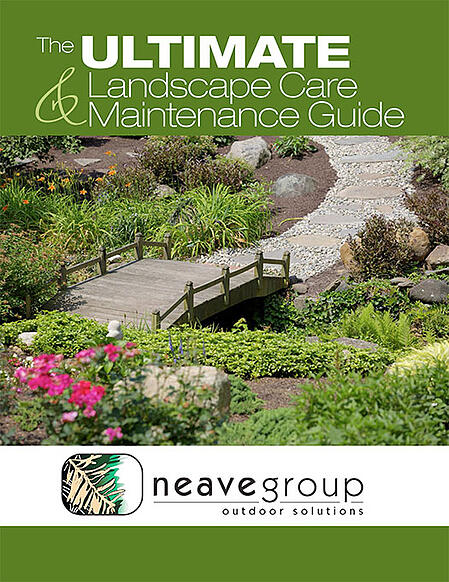We sure do love our lawns. Green, cool beneath our feet, perfect for picnics. But more and more homeowners are taking a second look at this lush green addiction.
Lawns do take a lot of work. They need plenty of water and require consistent fertilizer applications. Mowing every week is getting pretty old.
While some homeowners love spending time caring for their lush green lawn, others would rather spend their time elsewhere.
Aren’t there other options? You bet. Take a look at these low-maintenance lawn alternatives for New York and Connecticut, and you might wave goodbye to your traditional grass.
12 Low-Maintenance Lawn Alternatives To Consider
There are grasses that hardly need any mowing, groundcovers that practically take care of themselves, and artificial turf that looks like grass but just needs hosing off once in a while.
Reducing the size of your lawn benefits the environment while saving you time, energy and expense. And it can still look pretty.
No-Mow Lawns
No-Mow FescueNo-mow lawns are the product of seeds designed to require little or no water or mowing once established. No-mow turf can be mowed once or twice a year, or not at all.
These lawns are typically a mix of fine fescue grasses, a smaller species of grass that grow slowly with narrow blades and have a tendency to lay down nearly flat by mid-summer.
It’s happy in shade but doesn’t stand up to heavy foot traffic the way traditional turf grass does.
Lilyturf
Also called liriope, this evergreen ground cover features dark green strappy leaves and grows about a foot tall.
If you like the look of grass, this is a great alternative. It spreads to form a lush, grass-like cover, but don’t kick off your sandals yet — it’s really too lumpy to walk across.
It’s best suited for out-of-the-way areas and on steep banks.
Lilyturf tolerates a wide range of soil conditions and grows in sun to light shade. It doesn’t need as much water as traditional turf, but it does appreciate some irrigation.
Groundcovers
MossThese plants act just like they sound. They spread across the ground but don’t grow tall, so they don’t need mowing. Ground covers need little to no maintenance. They offer texture and choke out weeds by forming a dense carpet.
Many varieties are available, including some that flower and some that offer a lovely scent.
There’s a groundcover for every part of your yard. Stonecrops love dry, stony slopes, while mosses prefer the damp shade under trees.
One note: Groundcovers need edging to contain them. Make sure it tucks down into the ground a few inches.
Here’s a look at a few groundcovers that would be happy to take over for your high-maintenance lawn:
Clover
We know — you’ve spent a lot of time trying to get clover OUT of your lawn. Now we’re telling you: you can replace the whole lawn with it.
Clover is tough as nails, thriving in sun to partial shade and needing no fertilizer. It will endure some foot traffic but not heavy running and playing, so it’s not suited to an active family.
Clover is sweet-scented, inexpensive, and quite durable; grows in any kind of soil; stays green even during low-water periods; and feels lovely underfoot.
Moss
If you have moist, shady areas and acidic soil, a moss lawn might be perfect for you. No need for mowing, the pretty texture of mosses is a perfect complement for nearby flowering perennials and evergreens.
There are a lots of different mosses, each with different looks and textures.
Moss needs no fertilizer and very little water once it’s established, but it doesn’t handle heavy foot traffic well. If you want to walk through it daily, plan to add a flagstone walkway to avoid damaging your lawn.
Note: Keep it moist for the first three weeks. Also, a moss lawn could take a year to fill in.
Groundcover That Smells — And Tastes — Good
Some ground covers offer nice bonuses: they smell fabulous, and you can even nibble them.
These include chamomile, which has fern-like foliage and white flowers with yellow centers; Corsican mint, which thrives in shade and exudes a minty smell, and you can munch on it or steep it for tea; and assorted thymes, which feature dainty flowers and work well between pavers or as a low-mounding carpet.
Choose spicy orange thyme or creeping lemon thyme and you’ll soon say, “Lawn? What lawn?”
Sedge
SedgeSedges have grass-like leaves and grow in clumps. They come in many sizes and textures and grow in a number of different kinds of soils.
You can leave sedge unmowed for a taller, meadow-like look, or mow it a few times a year to maintain more of a lawn look.
Sedge can handle light foot traffic.
Ornamental Grasses
Ornamental grasses are different from turf grasses in that they’re not meant to be mowed. Instead, they grow into distinctive shapes — tufts, sprays, or flowing sweeps. Many types remain upright and attractive through cold weather and even in snow, providing seed heads for hungry birds.
They’re low maintenance and grow well in most soils. They seldom require fertilizer and have few pest and disease problems. They’re also drought-resistant.
Native Plants
For the lowest maintenance, choose native perennials.
Unlike many non-native plants, native plants are hardy and less susceptible to pests and diseases. They grow well and require little care. By choosing the right native plants, you’ll likely need fewer pesticides and less water.
Include vertical layers in the plantings, from the ground up. Include trees, shrubs, perennials and grasses. Birds and mammals love layers.
Plant in wide groups — it provides better shelter and breeding habitat for native bird species. Visit plantnative.org for a great list of choices.
Prairie Meadows
WildflowersMeadows feature a mix of wildflowers, low-growing flowering perennials and ornamental or native grasses. Most prairie meadows appreciate full sun, but some plants are happy with dappled shade.
Flower and Shrub Beds
If your yard has sloped areas that cause you to curse each time you mow, consider replacing them with terraced beds of flowers and shrubs.
Is your yard too shady for sun-loving grass? Beds of shade-loving plants would love to fill in. This is also a good solution for planting under trees with low-hanging branches or protruding roots, where mowing really tests your patience.
Remember, if you’re looking for low maintenance, you’ll want varieties of plants that don’t need to be pruned, regularly divided or staked as they grow tall. Ask your nursery or landscape professional for suggestions.
Artificial Turf
Artificial TurfThis seems like grass, but it isn’t. Artificial turf doesn’t need water, chemicals, or mowing.
A number of manufacturers have developed versions that are hard to distinguish from the real thing. Artificial turf is now available in a number of different textures, thickness, colors and densities to create a natural look.
One complaint about this turf is that it gets hot underfoot.
One manufacturer, XGrass, advertises “heat block,” which it claims makes their turf 17.5 degrees cooler than competitors’ artificial grass systems.
Neave Knows Lawn Alternatives
If you’re considering replacing your lawn with something new and low maintenance, Neave Landscaping is your perfect planting partner.
If you’re in the Hudson Valley, call us at (845) 463-0592. If you’re in Westchester County, call (914) 271-7996; from Connecticut, dial (203) 212-4800. Or fill out our simple web form, and we’ll contact you about setting up your free consultation.
Our skilled professionals are experts in all of the lawn alternatives, from ground covers and ornamental grasses to prairie meadows, native plants and artificial turf.
We’ll visit your property, survey your situation and talk over all the possibilities. All you have to do is start planning what you’ll do with all your new-found free time.
Images: Fescue, Moss, Sedge, Wildflowers, Artificial turf




